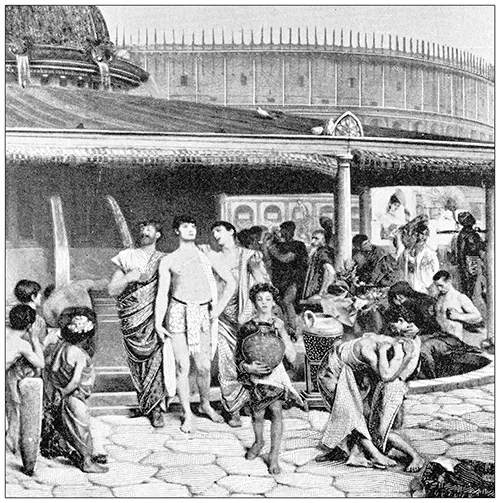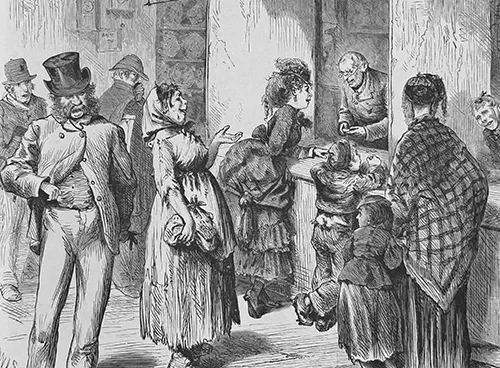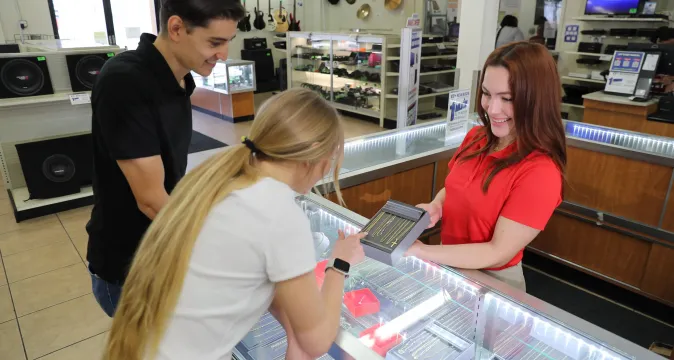
Published January 13, 2025
Below, we explore the fascinating journey of pawnbroking from ancient China to its global presence today, uncovering how it evolved into a vital financial service across centuries.
The inception of pawnbroking, and the first pawn shop, can be traced to the bustling markets of ancient China around 3,000 years ago. It began as a rudimentary system, providing laborers with short-term credit solutions during immediate financial needs2.
Early pawnbrokers operated with a stark simplicity offering clear-cut repayment terms to their clients. Surprisingly, this is still how pawn operates today, where amount lent is based on the value of goods and not credit1.
The essence of these initial transactions was not purely commercial—they served as an indispensable lifeline for all individuals, helping them endure economic hardships and sustain a minimal quality of life.
The History of Pawnbroking in Europe

As the world became more interconnected through trade routes and empire conquests, pawnbroking found its way from the heart of Asia to the ancient cultures of Greece and Rome. Money lending families gained lots of power in these historic times, as most people were poor farmers.
Here, merchants and small business owners began to utilize the services of pawnbrokers to support and finance their commercial ventures, including the funding of maritime trade expeditions. These merchants often sold gold or silver to pawn stores to finance their trips.
Interestingly, the term 'patinum' in Latin, meaning cloth or clothing, became linked with the concept of 'pawn,' reflecting the prevalent practice of workers pawning their garments – often their most valuable possessions – to fulfill their everyday financial needs2.
The universal spread of pawnbroking is a testament to its adaptability and its critical role in aiding commercial growth and providing sustenance for the less fortunate.
Regulations and the Evolution of Pawn Practices

As the practice of pawnbroking expanded over time from the middle ages, it necessitated the development of regulatory frameworks to safeguard both the pawnbroker and the customer, with the increase of stolen items appearing in pawnshops2.
These regulations were instrumental in molding the pawnbroking industry, ensuring fairness, and maintaining a reputable standing within the financial services sector.
In the 19th century, the Pawnbrokers Act of 1872 in England marked a significant milestone in this evolution. It set forth clear guidelines on interest rates and the treatment of stolen goods that may have been inadvertently sold by pawnbrokers. Such regulations were crucial in establishing the industry standards still in place today.
Modern Times in Pawn Shop History
The history of pawn in modern times reflects the evolution of pawn shops from traditional lending establishments to versatile financial institutions.
Pawn shops have long provided pawn loans, which are short-term loans subject to interest and fees. By lending money against valuable items, such as jewelry, electronics, luxury handbags and even video game systems, pawn shops have become a vital resource for many seeking financial assistance.
Contrary to common misconceptions, modern pawn shops operate under strict requirementsto prevent dealing in stolen items. This regulatory framework has helped maintain the integrity of the industry, making pawn shops a reliable source of short-term credit for a diverse clientele. Whether it's a family needing funds for an emergency or someone simply looking to cash in on unused valuables, pawn shops continue to play a vital role in the financial ecosystem.
Iconic Symbols and the Identity of Pawn Shops

The iconic symbol of three gold spheres, commonly associated with pawn shops, is believed to originate from the representation of three bags of gold coins, a sign of wealth and trust. Rooted in the deep history of the trade, this emblem continues to be an internationally recognized mark for pawnbrokers.
The adoption of such symbols has been crucial in shaping the identity of pawn shops and conveying a sense of reliability and tradition to customers worldwide.
Find a pawn shop that is open near me!
Significant Historical Moments Financed by Pawn

Pawnbroking has been a financial backbone for people and has played a crucial role in funding significant events throughout history. A notable example is King Edward III of England, who pawned his jewels to finance his military campaigns, and Queen Isabella of Spain, who famously pawned her royal jewels to fund Christopher Columbus's voyage to the New World2.
These instances highlight pawnbroking's instrumental role in shaping historical events, serving as a source of funding for monumental ventures that have had a lasting impact on the world. Visit USA Pawn & Jewelry to pawn your merchandise for fast cash today!
Find out more about USA Pawn and Jewelry by visiting “Our Story” page.
[1] Pawn transactions are based on the appraised value of the item presented. Item appraisal and the amount offered are determined at the sole discretion of the pawnbroker. Complete disclosure of APR, fees and payment terms are detailed on the pawn ticket. Terms and conditions apply and may vary by state and local jurisdiction.


